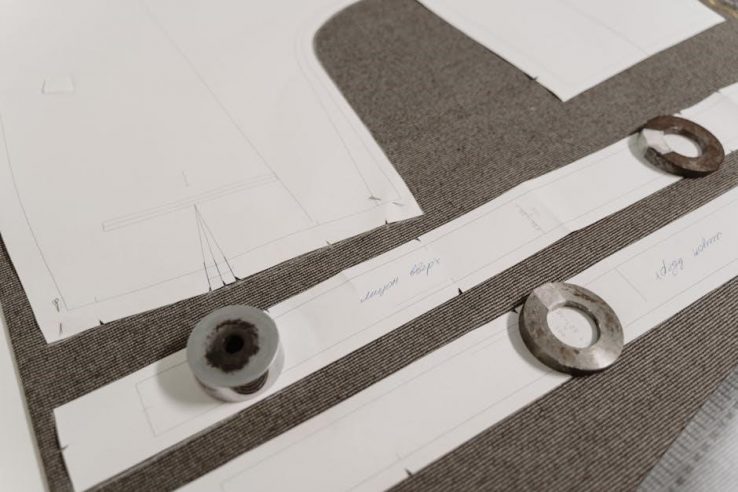Shadow work is a journey of self-discovery‚ exploring hidden aspects of the psyche. This workbook offers guided exercises‚ meditations‚ and affirmations to integrate your shadow self for emotional healing and personal growth.

What is Shadow Work?
Shadow work is the process of exploring and integrating the hidden‚ suppressed‚ or denied aspects of oneself‚ often referred to as the “shadow self.” These traits‚ emotions‚ and desires are typically conditioned to be rejected or ignored‚ yet they subconsciously influence behavior and decisions. The shadow self includes feelings like anger‚ jealousy‚ or fear‚ as well as positive qualities that may have been suppressed. Through shadow work‚ individuals acknowledge and accept these parts‚ fostering self-awareness and wholeness. This journey involves confronting uncomfortable truths and embracing both the light and dark within. The workbook provides tools like guided exercises‚ meditations‚ and affirmations to facilitate this transformative process‚ helping individuals heal emotionally and grow personally by bringing their shadow into the light.
Purpose of the Workbook
The purpose of the Shadow Work Workbook is to guide individuals through a transformative journey of self-discovery and healing. It serves as a comprehensive tool to explore and integrate the hidden aspects of the self‚ often referred to as the “shadow.” By providing structured exercises‚ meditations‚ affirmations‚ and journal prompts‚ the workbook helps users confront suppressed emotions‚ desires‚ and traits. Its aim is to illuminate the shadow self‚ fostering acceptance and wholeness. Designed to be accessible and engaging‚ the workbook offers a step-by-step approach to emotional healing‚ personal growth‚ and inner peace. Whether addressing anxiety‚ low self-esteem‚ or relationship challenges‚ the workbook empowers individuals to uncover their truth and embark on a path of self-awareness and liberation.

Structure of the Workbook
The workbook is organized into sections with guided exercises‚ meditations‚ affirmations‚ and self-love activities. Each part is designed to help users explore and integrate their shadow self effectively.

Overview of the Workbook
This workbook is a comprehensive guide designed to help individuals explore and integrate their shadow self through structured exercises‚ meditations‚ and affirmations. It serves as a compass for navigating the hidden aspects of the psyche‚ offering a progressive approach to self-discovery. The workbook includes a series of powerful questions and prompts that illuminate suppressed emotions‚ desires‚ and traits‚ encouraging users to confront and accept their shadow. By incorporating self-love activities‚ it ensures a balanced journey of healing and growth. The content is organized to gradually deepen understanding and facilitate transformation‚ making it accessible for those new to shadow work while providing depth for experienced practitioners. This resource is ideal for anyone seeking emotional healing‚ improved relationships‚ and personal development through the cathartic process of shadow integration.
Guided Exercises and Prompts
The workbook features a series of guided exercises and thought-provoking prompts designed to help users explore their shadow self. These exercises are simple yet powerful‚ encouraging individuals to confront suppressed emotions‚ desires‚ and traits. By answering without overthinking‚ users can uncover hidden aspects of their psyche and gain clarity on unresolved issues. The prompts are structured to help identify patterns‚ release shame‚ and reclaim disowned parts of the self. They also guide users in declaring their truth and understanding the people in their lives who respect and honor them. These exercises create a safe space for introspection‚ allowing individuals to process their shadow material effectively. The workbook’s prompts are complemented by meditations and affirmations‚ ensuring a holistic approach to shadow integration and personal growth. This section is a cornerstone of the workbook‚ providing practical tools for deep inner work.
Meditations and Affirmations
The workbook incorporates guided meditations and empowering affirmations to support the shadow work process. These meditations are designed to create a calm and introspective state‚ helping users connect with their shadow self. Affirmations are included to reinforce self-love and acceptance‚ essential for integrating suppressed emotions and traits. The meditations guide users in visualizing and releasing shame‚ while the affirmations help reframe negative self-perceptions. Together‚ these tools foster a compassionate environment for inner healing and growth. The workbook’s meditations and affirmations are crafted to complement the exercises‚ ensuring a balanced approach to shadow integration. By practicing these regularly‚ users can cultivate self-awareness‚ emotional resilience‚ and a deeper understanding of their true selves. This section emphasizes the importance of mindfulness and self-compassion in the journey of shadow work.
Self-Love Activities
The workbook includes self-love activities designed to nurture compassion and acceptance during the shadow work journey. These exercises help users develop a positive relationship with themselves‚ balancing the intensity of exploring suppressed emotions. Activities such as journaling prompts‚ creative expression‚ and mindfulness practices encourage self-care and self-compassion. By integrating self-love‚ users can approach their shadow work with kindness‚ reducing feelings of shame or judgment. These activities are essential for creating a safe and supportive environment for healing and growth. The workbook emphasizes that self-love is not a destination but a continuous practice‚ fostering resilience and emotional well-being. Through these activities‚ users can cultivate a deeper understanding of their worth and develop a more loving connection with their true selves.

Benefits of Shadow Work
Emotional healing‚ overcoming anxiety‚ and improved relationships are key benefits. It fosters personal growth‚ self-awareness‚ and self-acceptance‚ leading to a more authentic and fulfilling life.
Emotional Healing
Emotional healing is a profound outcome of shadow work‚ allowing individuals to confront and resolve deep-seated wounds. By exploring suppressed emotions and past traumas‚ this process fosters self-awareness and acceptance. The workbook provides guided exercises‚ journal prompts‚ and meditations to help release emotional burdens. Through this journey‚ users can address unresolved pain‚ letting go of shame and guilt. Emotional healing enables a deeper connection with oneself‚ promoting inner peace and harmony. It’s a transformative experience that empowers individuals to move beyond limiting patterns and embrace their true selves. The workbook’s structured approach ensures a safe and supportive environment for this cathartic process‚ leading to lasting emotional freedom and wholeness.
Improved Relationships
Shadow work profoundly enhances relationships by fostering self-awareness and understanding of others. By addressing suppressed emotions and unresolved conflicts‚ individuals can communicate more authentically and empathetically. The workbook’s exercises help users recognize patterns of projection and defensiveness‚ allowing them to take responsibility for their actions. This process cultivates healthier boundaries and deeper connections. Improved relationships are a natural outcome of shadow work‚ as it encourages vulnerability‚ trust‚ and mutual respect. The workbook’s guided prompts and reflections empower individuals to navigate conflicts with grace and understanding‚ leading to more harmonious and fulfilling interactions. By healing inner wounds‚ shadow work creates a foundation for stronger‚ more authentic relationships in all areas of life.
Personal Growth
Shadow work is a powerful catalyst for personal growth‚ enabling individuals to confront and integrate hidden aspects of their psyche. By exploring suppressed emotions‚ desires‚ and traits‚ users of the workbook gain profound self-awareness and understanding. This process fosters emotional resilience‚ helping individuals break free from limiting patterns and embrace their authentic selves. The workbook’s guided exercises and reflections encourage self-reflection‚ empowering users to release shame and embrace their wholeness. Personal growth through shadow work leads to increased self-acceptance‚ confidence‚ and a deeper connection to one’s true nature. As users heal and integrate their shadow‚ they experience transformative changes‚ unlocking their full potential and living more authentically. This journey of self-discovery is a cornerstone of the workbook’s approach to fostering lasting personal evolution and inner harmony.
Overcoming Anxiety
Shadow work is a powerful tool for overcoming anxiety by addressing its root causes. The workbook guides users to explore and heal hidden fears‚ insecurities‚ and unresolved emotions that often fuel anxiety. By confronting and integrating suppressed aspects of the self‚ individuals can reduce anxiety symptoms and develop emotional resilience. The exercises and meditations in the workbook help users identify patterns of negative thinking and behaviors that contribute to anxiety. Through self-reflection and affirmations‚ users learn to reframe their perceptions and cultivate inner peace. Shadow work empowers individuals to release the burden of hidden traumas and embrace their authentic selves‚ leading to a significant reduction in anxiety and a deeper sense of calm and confidence. This transformative process supports long-term emotional healing and well-being.
Building Self-Esteem
Shadow work is a transformative process for building self-esteem by helping individuals confront and heal deeply buried insecurities and self-doubt. The workbook provides exercises and affirmations designed to uncover and integrate hidden aspects of the self‚ fostering self-acceptance and confidence. By exploring suppressed emotions and beliefs‚ users can release negative patterns that undermine their self-worth. The guided meditations and prompts encourage self-reflection‚ allowing individuals to recognize their true value and strengths; Shadow work empowers users to embrace their authenticity‚ letting go of societal expectations and internalized criticism. This journey of self-discovery helps rebuild self-esteem‚ enabling individuals to develop a compassionate and loving relationship with themselves. The workbook offers practical tools to cultivate resilience‚ self-trust‚ and confidence‚ leading to a more empowered and fulfilling life.
Enhancing Relationships
Shadow work is a powerful tool for enhancing relationships by addressing unresolved emotional wounds and hidden patterns that often sabotage connections. The workbook provides exercises to uncover and heal these issues‚ fostering deeper empathy and understanding. By integrating the shadow self‚ individuals can communicate more authentically and set healthy boundaries. The guided prompts and meditations help users release projection and judgment‚ allowing them to see others more clearly. Shadow work also promotes self-awareness‚ reducing conflicts and fostering trust. This process encourages vulnerability and openness‚ leading to more meaningful and authentic relationships. The workbook offers practical strategies to navigate challenges and cultivate harmony‚ helping users build stronger‚ more fulfilling connections with others. Through shadow work‚ individuals can create relationships rooted in mutual respect and genuine understanding.

How to Use the Workbook
This workbook guides you through shadow work with simple yet powerful exercises‚ meditations‚ and affirmations. Start with intention‚ engage deeply‚ and practice self-compassion throughout your journey.
- Begin with an open mind and willingness to explore your shadow self.
- Set aside time for reflection and journaling to maximize growth.
- Use the meditations to create a safe space for inner exploration.
- Track your progress to celebrate small victories and insights.
- Be patient and kind to yourself as you navigate this transformative process.
Getting Started
Embark on your shadow work journey with intention and curiosity. Begin by setting a clear purpose for why you want to explore your shadow self. Create a sacred space for reflection‚ free from distractions‚ where you can engage openly with the exercises. Start with the introductory sections to understand the concept of shadow work and its significance in your personal growth. Dedicate time each day or week to work through the prompts and meditations‚ allowing yourself to fully immerse in the process. Journal your thoughts‚ feelings‚ and insights as they arise‚ and remember to practice self-compassion. The workbook is designed to guide you progressively‚ so trust the structure and allow yourself to unfold naturally. By taking these initial steps‚ you lay a strong foundation for a transformative experience.

Engaging with Exercises

Engaging with the exercises in the shadow work workbook is a powerful way to confront and integrate your shadow self. Each exercise is designed to guide you deeper into self-awareness‚ helping you identify and understand hidden patterns‚ emotions‚ and beliefs. Start by approaching the prompts with honesty and vulnerability‚ allowing yourself to explore uncomfortable truths without judgment. Journaling your responses will help you process and reflect on your discoveries. Many exercises encourage you to reconnect with parts of yourself you may have suppressed‚ fostering healing and wholeness. Remember‚ shadow work is not about perfection but progress. Be patient and kind to yourself as you navigate these transformative practices. The exercises are tools to illuminate your path‚ so embrace them with an open heart and mind.
Tracking Progress
Tracking your progress in the shadow work workbook is essential to witness your growth and integration. Regularly review your journal entries to see how your perspectives and emotions have evolved. Celebrate small victories‚ as they signify steps toward healing and self-awareness. Use the workbook’s exercises to reflect on how your relationships‚ self-esteem‚ and emotional resilience have improved. Over time‚ you’ll notice greater clarity and peace in your life. Tracking progress also helps identify areas that may still need attention‚ allowing you to focus your efforts where needed. Remember‚ shadow work is a journey‚ and every step forward is a testament to your commitment to wholeness. By documenting your experiences‚ you’ll gain valuable insights and motivation to continue your transformative path.
Additional Resources

The shadow work workbook PDF is available for free‚ offering a comprehensive guide to journaling and exercises. Explore online communities and recommended reading for deeper insights and support.

Free PDF Availability
The shadow work workbook PDF is freely available for download‚ offering a comprehensive guide to journaling‚ exercises‚ and meditations. Designed to facilitate self-discovery and emotional healing‚ this resource provides structured prompts and affirmations to help integrate your shadow self. Whether you’re addressing anxiety‚ low self-esteem‚ or relationship challenges‚ this workbook serves as a powerful tool for personal growth. Sources like Benebell Wen and Jordan Thornton offer accessible versions of the PDF‚ ensuring everyone can embark on their shadow work journey. Download the shadow work workbook today and begin your path toward inner peace‚ self-awareness‚ and wholeness.
Online Communities
Engaging with online communities dedicated to shadow work can enhance your journey. Platforms like Benebell Wen’s website and Jordan Thornton’s Shadow Work Library offer forums and resources for deeper exploration. These spaces provide support‚ shared experiences‚ and guidance from experienced practitioners. Many communities share free workbooks‚ meditations‚ and exercises to complement your practice. Joining these groups allows you to connect with others on similar paths‚ fostering accountability and motivation. Additionally‚ websites like YouTube host playlists and discussions on shadow work‚ offering accessible content for learners; These online hubs create a nurturing environment to explore your shadow self‚ ensuring you never feel isolated in your journey toward self-discovery and healing.
Recommended Reading
Supplement your shadow work journey with recommended reading materials. The Ultimate Shadow Work Journal & Workbook by Leigh W. Hart is a comprehensive guide offering deep insights and practical exercises. Benebell Wen’s resources‚ including her Independent Shadow Work Cartomancy Session‚ provide unique approaches to exploring your shadow self. Additionally‚ Jordan Thornton’s Shadow Work Library is a valuable online resource‚ featuring extensive materials for self-discovery. These workbooks and guides are designed to complement your practice‚ offering diverse perspectives and tools for emotional healing and personal growth. They provide structured frameworks to help you navigate complex emotions and integrate your shadow self effectively. By exploring these recommended readings‚ you can deepen your understanding and enhance your shadow work experience.






























